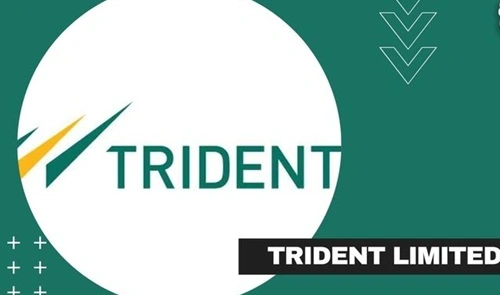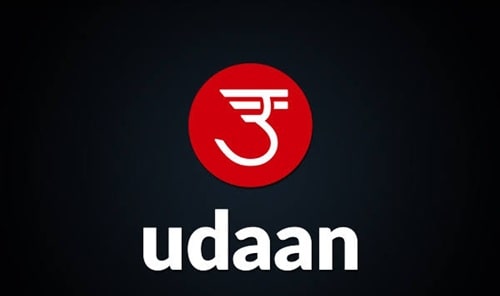Trident Ltd is an Indian company that deals with the manufacturing of textiles, yarn, and wheat-straw-based papers. The company was founded in the 1990s with the idea of doing textile operations in the early days, but the brand has expanded in recent years. The brand now uses a vertically integrated model where it handles raw materials, production of yarns, towels, and bed linens. The brand also works with the production of paper and chemicals, along with energy and captive power.
Over the years, Trident expanded globally with export quality in mind to serve international players for retailers and brands. Trident has been focusing more on growing its presence in the domestic market recently with home textiles. It also owns a brand called MyTrident for regular customers, and there is a premium segment as well, with the name Luxehome. As of FY25, the company posted consolidated revenue of around ₹7,047 crores.
Its business demand is highly dependent on scale, export markets, and product mix, such as towels, yarn, bedsheets, and paper. To understand the money-making process of Trident, looking at their business structure, yearly revenue numbers, income streams, and financial reports will help. Let’s get started with structure first:

How is Trident Business Structured?
There are three structures used in the Trident Business model, where they diversify their revenue from the following products:
- Home Textiles: In this segment, Trident manufactures towels, terry towels, bathrobes, bed linen, and bedsheets.
- Paper and Chemicals: Trident offers wheat-straw-based paper in this segment, which is marketed as a sustainable paper output. The company also manufactures industrial chemicals.
- Energy, Captive Powers, and Productivity: The company focuses on its own power generation to run its plants to reduce operational costs and risk.
Having these three industries interconnected and focusing on efficiency helps in reducing operational costs. At the same time, having complete control over all three steps ensures a smooth operation with less risk.
| Company/Brand | Trident Ltd |
| Establishment Year | 1990s (textile operations; registered company around 1990) |
| Headquarters | Punjab, India |
| Founder/Owner | Promoter group, including the Gupta family; publicly listed company |
| Industry | Textiles (Home Textiles, Yarn), Paper & Chemicals, Renewable / Captive Energy |
| Net Worth (2025) | ₹ 7,047 crore (consolidated) |
| Total Revenue 2025 | ₹ 371 crore |
How Does Trident Make Money?
Trident makes money using many streams, but its key revenue streams drive profit for Trident using the following products and strategies:
1. Export of Home Textile Products
A major source of revenue for Trident is exporting home textile products: towels, bed linen, and bedsheets. Being one of the larger manufacturers globally, they supply to big international retailers under private labels. Because export demand tends to offer higher volume and somewhat more stable pricing (especially in developed markets), exports form a large share of textile revenue.
2. Yarn Sales and Business Segment Integration
Trident produces its own yarn, which is also used in the making of towels and bed sheets, offering complete control over raw material to end product. Trident can sell yarn externally to many other textile mills, which ensures a complete integration and reduction in input dependency and cost. Due to this, Trident enjoys better margins than its competitors.
3. Domestic and Branded Textile Segments
While export is strong, Trident is pushing growth in domestic branded home textile sales. Their “MyTrident” brand and the premium segment “Luxehome” are meant to cater to Indian consumers directly. Domestic branding allows higher margins (no heavy discounts or intermediaries), better pricing control, and product differentiation.
4. Paper and Chemical Business
Besides the textile business, Trident’s Paper and Chemical division manufactures wheat straw with sustainability in mind. This segment sells writing and printing paper, which is used for office and institutional purposes. This helps in diversifying revenue, and the manufacturing of chemicals also supports textile finishing and other processes.
5. Cost Saving Via Captive Power and Energy
Trident runs its own energy sources (captive power, possibly renewable components) to run its manufacturing units. This reduces reliance on external power, helps control utility costs, and mitigates the risk of power inflation.
Financial Performance
For FY25, Trident’s consolidated revenue was about ₹7,047 crore, which was up by 3% YoY, and its consolidated net profit after tax for FY25 was ₹371 crore. The company enjoyed a 6% increment in YoY net profit after tax.
What’s new in 2025?
Trident is pushing its business toward capturing the domestic textiles and branded products through its new sub-brand called MyTrident and Luxehome. These two brands combined air to triple domestic sales within the next couple of years, as per NDTV profit. Product innovation is being emphasized (fashion towels, lightweight/slim towels, organic dyes, quick-dry options), plus better automation/efficiency in manufacturing. Considering the strong growth in profits in Q1 FY26, the revenue and profits are expected to increase by 126% approximately in YoY.



